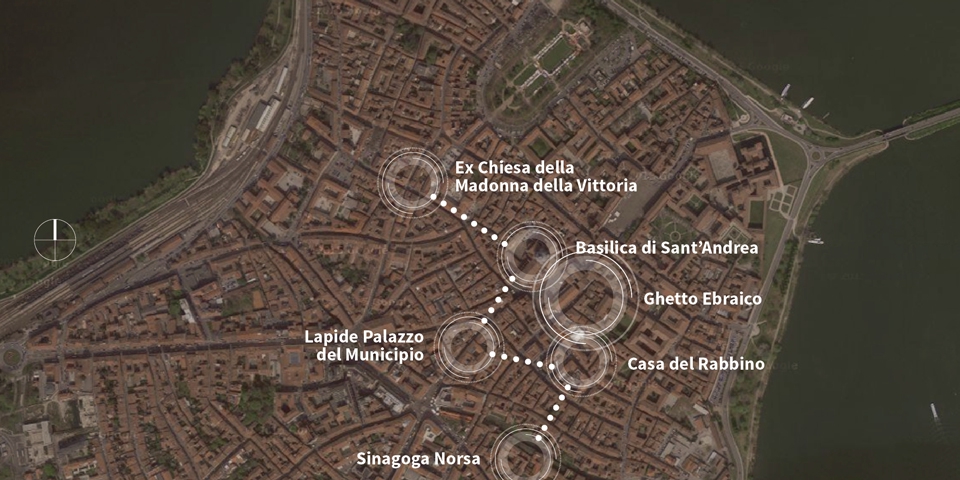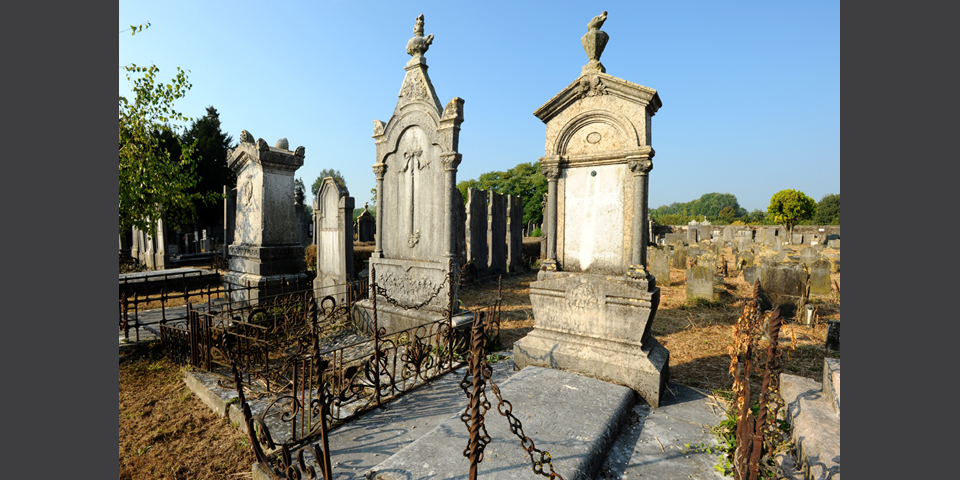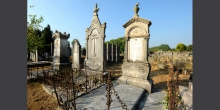MANTUA, THE CITY OF THE GONZAGA
MAGIC ATMOSPHERE AMONG SPLENDID PALACES AND OLD JEWISH MEMORIES
Mantua welcomes visitors with its extraordinary palaces, churches, squares and paintings. Many of them are situated in the historical center, once inhabited by the many Jews generously summoned and welcomed by the Gonzaga. Mantua and the Jews have shared common history for more than 5 centuries, albeit with ups and downs.
info@turismo.mantova.it
tel. 0376 432432
Comunità ebraica Mantova, from monday to friday, 9-11.
via Govi 11
+39 0376 321490/ +39 0376 321461
comebraica.mn@virgilio.it

REDESCOVERING THE OLD GHETTO AND THE REBUILT SYNAGOGUE
The ghetto extended through the heart of the city. In 1904, Mantua was destroyed and the ghetto was demolished. There were four closing doors: on the corner of via Giustiziati, in Piazza Concordia (former Piazza dell’Aglio), in via Spagnoli (former contrada of Jewish jewelers), in via Bertani (former contrada del Tubo). Inside, there were six synagogues, three of Italian rite (Grande, Cases and Norsa-Torrazzo) and three of German rite (Beccaria, Ostiglia and Porto). Only the Norsa-Torrazzo was preserved, and a perfect copy was rebuilt in the present via Govi 13. Before demolition, the decorative plasters were reproduced with accurate casts; paving, doors and windows and all 18th century furniture was taken away. So the present synagogue is a perfect copy of the original one. A splendid prayer hall, quadrangular, with wide windows along the major sides, interrupted only by two niches which house, raised on three steps, finely decorated wooden furniture, embellished with aron and tevà embroidery. High above the entrance, is the women’s gallery and choir. Today it’s the only still active synagogue in town, in the courtyard of the community seat, and it houses a rich historical archive that contains several tens of thousands of documents, partly hand written and partly printed. They date back to the period between 1522 and the second postwar era. Another important Jewish collection has been housed in the Teresiana Public Library in Mantua since 1925. The collection is made of 160 manuscripts which date back to the period between the 14th and 18th century, and they can be consulted also online on the Teresiana Public Library website (www. bibliotecateresiana.it – via Roberto Ardigò 13).
WANDERING ABOUT, AMONG CURIOSITIES AND SURPRISES
If you reach via Bertani 54 (once contrada del Grifone), you will be able to admire the so-called Rabbi House. It is one of the three remaining buildings of the ghetto, accurately restored in 1961. According to tradition, the Rabbis of the community used to live here. It is an imposing four-floor building that dates back to the 17th century, with a façade decorated with friezes and masks. Six tiles reproduce images taken from the Bible. A small balcony with a wrought iron banister stands above the entrance door, decorated with marble. Do stop also on the corner between via Fernelli and via Monteverdi to visit the church of Santa Maria della Vittoria. Here, in 1946 there was the house of the banker Daniele Norsa. When he bought it, he was allowed to erase the image of the Madonna from the façade. Two years later, during a procession, people threw stones at the house. Unwillingly, Duke Francesco Gonzaga forced the banker to demolish the building, and had a church built on the site. It was dedicated to the victory of the Gonzaga over the French at Fornovo (1495). An anonymous painter of Mantegna school commemorated the event in a painting, housed in the church of Sant’Andrea: a Sacred Family, with Saint Gerolamo holding the model of the church and, at his feet, Norsa the banker, with the distinctive sign on the cloak. Finally, stop in front of the gravestone in the entrance gallery of the Town Hall, in via Roma 39, which commemorates the Jews living in Mantua territory who took part in the Renaissance wars. Next to it, another stone commemorates the Jews from Mantua deported to Nazi concentration camps.




